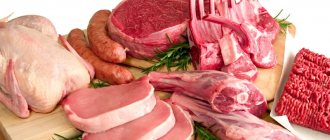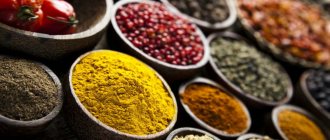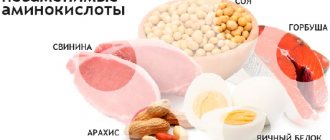Back to Product Composition
In all living systems, proteins, also known as proteins, are of primary importance. All chemical and biochemical processes that support the life of cells and organisms are performed exclusively by enzymes, molecules of protein nature. Proteins also perform a construction function, both at the cellular level and at the level of the organism as a whole. The functional diversity of proteins is determined by their spatial structure, location, but above all, their chemical composition.
From a chemical point of view, proteins are polymers made of amino acids . This name reflects the structure of these substances, containing at least one amino group -NH2 and one carboxyl group -COOH. They differ only in the structure of their radical, which, in fact, determines their individual physicochemical properties.
Natural proteinogenic amino acids
The total number of amino acids in nature is about 300, in the human body - more than 60. However, the number of amino acids from which protein synthesis occurs is only about 20 (sometimes there are 21-22), and they are called proteinogenic amino acids, or natural. From them, in the process of protein synthesis and the formation of its structure, other amino acids are formed. These natural 20 amino acids are programmed in the genetic code of any organism, from a virus to a person, and it is their sequence in the protein molecule chain that determines the uniqueness of all forms of life on Earth.
In human organs and tissues, the main role of these compounds is participation in protein synthesis, which takes up the vast majority of all received or formed amino acids. But there are also individual amino acids that have independent functions. Thus, tyrosine is responsible for the coloring of hair, skin, eyes, and gives a dark color to food products, for example, rye bread, since with its participation dark-colored pigments - melanins are synthesized. A number of representatives of this class play the role of mediators - substances responsible for the transmission of nerve impulses from one nerve cell to another (acetylcholine, glutamic and aspartic acid, glycine, GABA, histamine, serotonin, norepinephrine). The amino acid glutamine ensures the transport of nitrogen metabolism products in human blood.
In addition to proteins, amino acids are made up of shorter molecules that play an important role in the body: oligopeptides. Among them there are not very short chains of amino acid residues, for example, the hormone insulin, and very short ones, up to dipeptides (or bipeptides), which consist of only two amino acid residues (for comparison: proteins have hundreds of amino acid residues). The most important dipeptides are carnitine and carnosine, the strongest natural antioxidant.
What are amino acids? Harm and benefit
Amino acids are organic compounds, those “building blocks” that make up protein molecules - the basis of any living organism. Protein is an essential element, the basis for the functioning of our body. Our muscles and body, bones and internal organs, hair and nails are made of protein. Hormones and bioenzymes are also based on protein compounds.
It is necessary to eat protein and foods rich in essential amino acids daily to maintain a healthy body. If we compare proteins and amino acids, the latter have great biological value for our body.
The 20 amino acids obtained from food are especially important for our health; they have different compositions and many functions. Scientists separately identify a list of 8 amino acids, calling them essential. This means that our body cannot synthesize them on its own, so they can only enter the body with food.
You will be surprised to learn that the animal body is capable of independently synthesizing all types of amino acids - both essential and non-essential. That is why every person who cares about their health needs to take a competent approach to compiling a daily diet. If it is difficult to obtain essential amino acids from food, you can freely purchase dietary supplements or specialized vitamin complexes at the pharmacy.
Article on the topic:
How to take turmeric for medicinal purposes? Recipes for treatment and prevention
Replaceable and essential amino acids
The source of amino acids in food products is proteins. All food proteins differ in their amino acid composition. This is of great importance in the selection of complete diets due to the fact that a number of amino acids are irreplaceable (essential) - they can only be obtained from food products. Essential proteinogenic amino acids include valine, isoleucine, leucine, threonine, methionine, lysine, phenylalanine, tryptophan. In contrast, nonessential amino acids can be synthesized in the human body from precursors. These are glycine, alanine, proline, serine, cysteine, aspartate, asparagine, glutamate, glutamine, tyrosine. Partially replaceable ones include arginine and histidine, since they are synthesized rather slowly in the body.
A deficiency or complete absence of even one essential amino acid in the diet leads to a negative nitrogen balance, which in turn over time causes severe clinical consequences such as vitamin deficiency: disruption of the central nervous system, growth arrest, etc.
It is extremely important to note that if any one essential amino acid is deficient, this leads to incomplete absorption of others. This pattern is subject to Liebig’s law, according to which the development of living organisms is determined by the essential substance that is present in the smallest quantity.
What foods contain essential amino acids? These are all food ingredients rich in protein.
Table of amino acid content in food
| Product | Protein, % | Amino acids (mg per 100 g net product) | ||||||||
| Tryptophan | Lysine | Methionine | Valin | Threonine | Leucine | Isoleucine | Phenylalanine | Histidine | ||
| Chicken egg | 12,7 | 204 | 903 | 424 | 772 | 610 | 1081 | 597 | 652 | 340 |
| Cow's milk | 3,2 | 50 | 261 | 87 | 191 | 153 | 324 | 189 | 171 | 90 |
| Meat | ||||||||||
| beef 1st category | 18,6 | 210 | 1589 | 445 | 1035 | 803 | 1478 | 782 | 795 | 710 |
| beef 2nd category | 20,0 | 228 | 1672 | 515 | 1100 | 859 | 1657 | 862 | 803 | 718 |
| veal 1st category | 19,7 | 245 | 1683 | 414 | 1156 | 855 | 1484 | 998 | 791 | 739 |
| veal 2nd category | 20,4 | 260 | 1755 | 453 | 1177 | 892 | 1566 | 1050 | 828 | 740 |
| pork meat | 14,3 | 191 | 1239 | 342 | 831 | 654 | 1074 | 708 | 580 | 575 |
| rabbits | 21,1 | 327 | 2199 | 499 | 1064 | 913 | 1734 | 864 | 512 | 626 |
| chickens of the 1st category | 18,2 | 293 | 1588 | 471 | 877 | 885 | 1412 | 653 | 744 | 486 |
| chickens of the 2nd category | 20,8 | 330 | 1699 | 574 | 899 | 951 | 1824 | 828 | 896 | 379 |
| turkeys 1st category | 19,5 | 329 | 1636 | 417 | 930 | 875 | 1587 | 963 | 803 | 540 |
| turkeys 2nd category | 21,6 | 354 | 1931 | 518 | 1017 | 961 | 1819 | 1028 | 851 | 436 |
| beef liver | 17,9 | 238 | 1433 | 438 | 1247 | 812 | 1594 | 926 | 928 | 847 |
| beef kidneys | 15,2 | 214 | 1154 | 326 | 857 | 638 | 1240 | 714 | 677 | 687 |
| beef tongue | 16,9 | 176 | 1373 | 345 | 845 | 708 | 1215 | 766 | 696 | 616 |
| Sausage | ||||||||||
| doctorate | 12,8 | 151 | 945 | 177 | 672 | 529 | 913 | 547 | 508 | 318 |
| milk sausages | 11,4 | 203 | 839 | 111 | 630 | 357 | 757 | 313 | 369 | 302 |
| Fish | ||||||||||
| cod | 16,0 | 210 | 1500 | 500 | 900 | 900 | 1300 | 1500 | 800 | 450 |
| pollock | 15,9 | 200 | 1800 | 600 | 900 | 900 | 1300 | 1100 | 700 | 400 |
| sea bass | 18,2 | 170 | 1700 | 500 | 1000 | 900 | 1600 | 1100 | 700 | 400 |
| carp | 16,0 | 180 | 1900 | 500 | 1100 | 900 | 1800 | 800 | 800 | 300 |
| zander | 18,4 | 184 | 1619 | 534 | 975 | 791 | 1398 | 938 | 681 | 400 |
| Atlantic herring | 19,0 | 250 | 1800 | 350 | 1000 | 900 | 1600 | 900 | 700 | 500 |
| squid | 18,0 | 324 | 2005 | 521 | 500 | 648 | 2070 | 432 | 216 | 324 |
| Cottage cheese | ||||||||||
| lean | 18,0 | 180 | 1450 | 480 | 990 | 800 | 1850 | 1000 | 930 | 560 |
| fatty | 14,0 | 212 | 1008 | 384 | 838 | 649 | 1282 | 690 | 762 | 447 |
| Hard cheese | 26,8 | 788 | 1747 | 865 | 1414 | 1067 | 1780 | 1146 | 1280 | 1508 |
| Soybeans | 34,9 | 450 | 2090 | 560 | 2090 | 1390 | 2670 | 1810 | 1610 | 620 |
| Peas | 23,0 | 260 | 1660 | 250 | 1100 | 930 | 1650 | 1330 | 1110 | 600 |
| Beans | 22,3 | 260 | 1590 | 280 | 1120 | 870 | 1740 | 1030 | 1130 | 630 |
| Groats | ||||||||||
| buckwheat | 12,6 | 180 | 630 | 260 | 590 | 500 | 680 | 520 | 540 | 300 |
| oatmeal | 11,9 | 160 | 420 | 140 | 580 | 350 | 780 | 500 | 550 | 220 |
| rice | 7,0 | 80 | 260 | 130 | 420 | 240 | 620 | 330 | 350 | 160 |
| Poltava | 12,7 | 90 | 280 | 140 | 380 | 300 | 680 | 330 | 580 | 250 |
| pearl barley | 10,4 | 100 | 300 | 120 | 490 | 320 | 490 | 460 | 460 | 190 |
| barley | 9,3 | 120 | 320 | 160 | 450 | 210 | 510 | 560 | 490 | 230 |
| millet | 12,1 | 180 | 360 | 270 | 620 | 440 | 1620 | 590 | 580 | 290 |
| pasta | 12,3 | 125 | 249 | 189 | 518 | 331 | 866 | 470 | 626 | 261 |
| 1st grade wheat flour | 10,6 | 120 | 290 | 160 | 510 | 330 | 880 | 530 | 580 | 240 |
| Flour products | ||||||||||
| Rye bread | 5,5 | 67 | 186 | 62 | 268 | 175 | 356 | 207 | 309 | 103 |
| wheat bread made from 2nd grade flour | 8,4 | 97 | 229 | 138 | 384 | 274 | 538 | 303 | 391 | 172 |
| sliced loaves from 1st grade flour | 7,4 | 83 | 165 | 117 | 330 | 213 | 553 | 295 | 395 | 166 |
| “Oktyabrenok” bun for baby food | 11,1 | 126 | 423 | 318 | 503 | 394 | 913 | 494 | 442 | 237 |
| Potato | 2,0 | 28 | 135 | 26 | 122 | 97 | 128 | 86 | 98 | 23 |
Now you can plan your diet yourself, knowing which foods contain amino acids.
Read more: Interval training example of training for weight loss at home
Food as sources of essential amino acids
Amino acids are extremely rarely presented in free form. The latter is found in special food products, for example, sports nutrition, where they are directly added in a free state for faster and more complete absorption. Basically, they enter the body as part of proteins and are then released during the hydrolysis of the latter. Amino acids or small peptides released as a result of hydrolysis can already be absorbed in the intestine.
The most important sources of essential amino acids in the required ratio are the following food products, which contain easily digestible proteins: milk, dairy products, eggs, meat and meat products, fish, seafood, soybeans, legumes (peas, lentils, beans, soybeans), cereals, bread, potatoes, etc.
Along with the amino acid composition, the biological value of proteins is determined by the degree of their absorption after digestion.
The degree of digestion, in turn, depends, on the one hand, on the state of the body (enzyme activity, depth of hydrolysis in the gastrointestinal tract), and on the other hand, on the type of pre-treatment of proteins in food preparation processes (thermal, hydrothermal, microwave and etc.). Heat treatment, boiling, mashing and grinding speed up the digestion of protein, especially vegetable protein, while heating to very high temperatures above 100°C makes it difficult. Back to Product Composition
The effect of amino acids on the body
Protein that enters the body with food is broken down into 20 amino acids. They are required to perform the following functions:
- synthesis of hormones;
- maintaining the activity of thought processes due to the conduction of nerve impulses;
- tissue restoration and growth;
- regulation of the nervous system;
- formation of muscle fibers;
- production of antibodies and enzymes;
- Metabolism management.
Organic compounds are a structural component of proteins
Daily requirement
The body needs absolutely all amino acids. Their number should be harmonious. The ratio of animal proteins to plant proteins is 65:36-45:55. It is important not only the presence of organic compounds in the product, but also their concentration.
The quality of the protein is essential. Animal products are digested better than plant products. To cover the need for amino acids, you need to include food from different groups in your diet.
Attention! The daily requirement depends on the type of substance. The total amount is up to 2 g.
What factors influence the content of amino acids in the body?
Some people have impaired absorption of organic compounds, which can cause allergic reactions. This phenomenon is usually congenital in nature and requires a decrease in the amount of nutrients supplied.
Increasing the concentration of nutrients is required in the following cases:
- active growth;
- professional sports;
- intense mental and physical stress;
- period after a long illness.
The digestibility of proteins depends on the type of product. The maximum indicator is observed for the following items:
- egg white;
- lean meats and fish;
- cottage cheese.
It is also important to combine products correctly. For example, you can add milk to buckwheat porridge. Cottage cheese and meat are suitable for flour products.
Attention! Organic compounds dissolve in water and interact with certain vitamins and minerals. They are involved in the synthesis of important hormones: adrenaline, melanin, serotonin, norepinephrine, serotonin.
Causes and signs of deficiency and excess
Amino acids are found in foods. Some substances can be synthesized in the body. The lack and increase in the concentration of certain proteins is caused by an inadequate diet and abuse of certain foods. Sometimes an imbalance occurs due to liver pathologies and diabetes.
Symptoms of organic compound deficiency include:
- decreased appetite;
- drowsiness and weakness;
- hair loss;
- delayed development and growth;
- deterioration of the skin condition;
- anemia;
- frequent ARVI.
Against the background of excess proteins, the following symptoms may be observed:
- hypertension;
- dysfunction of the thyroid gland;
- early gray hair;
- joint pathologies;
- risk of increased stroke and heart attack.
Important! An increase in the level of amino acids occurs with a deficiency of selenium, ascorbic acid, tocopherol, retinol and B vitamins. It is these nutrients that neutralize excess proteins.











